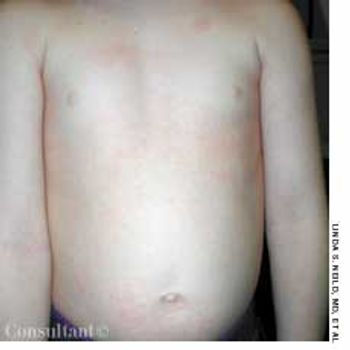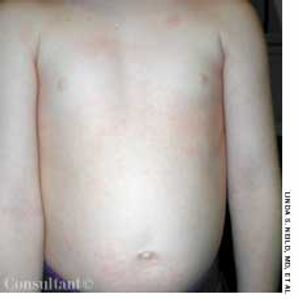
This 6-year-old boy was brought to his physician for evaluation of a rash. The child had been running a fever and, for the past 48 hours, had been complaining of a sore throat, headache, and abdominal pain.

This 6-year-old boy was brought to his physician for evaluation of a rash. The child had been running a fever and, for the past 48 hours, had been complaining of a sore throat, headache, and abdominal pain.

Children are at greater risk than adults for many travel-related problems, such as barotitis and barotrauma associated with flying, cold and heat injury, drowning, and infection with geohelminths. Most of these problems can be avoided with appropriate measures. Here, a summary of the most important steps.

ABSTRACT: Infant colic is a diagnosis of exclusion; its true cause is not known. To rule out alternative diagnoses, obtain a detailed history, look for clues to an underlying organic disease or genetic syndrome, and perform regular head-to-toe physical examinations. The interventions most commonly used to treat colic include modification of parental behavior (such as increased carrying of the infant or decreased infant stimulation), milk- and/or soy-free formulas, modifications in the diet of a breast-feeding mother, soothing measures (such as car rides, rocking, or use of a pacifier), anticholinergic agents, sedatives, and alternative medicine approaches (such as sucrose solution, herbal teas, or infant massage). The medications used to treat colic-such as antispasmodics and anticholinergics-can have serious adverse effects; discuss the pros and cons of drug therapy with parents before prescribing these agents. Remind parents that colic resolves by age 3 to 4 months, regardless of the intervention used.

Published: September 14th 2005 | Updated:

Published: April 1st 2003 | Updated:

Published: July 1st 2005 | Updated: